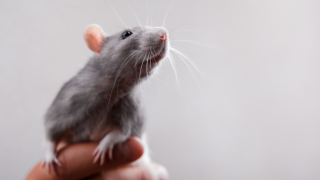As a result of our work, thousands of rabbits will be spared from horrific Draize experiments

International rabbit day conjures up ideas of sweet rabbits bouncing through fallen leaves. Sadly this notion is a far cry from the thousands of rabbits cruelly used in research and testing each year. Latest statistics show that in the EU during 2011, 358,213 rabbits suffered in experiments – an 8% increase since the last statistics were released.
Many rabbits used in experiments are subjected to Draize experiments - painful skin and eye irritation tests. These tests were developed in the 1940s. They are cruel and scientifically unreliable and have been replaced by modern, human tissue based models yet rabbits continue to be used. Shockingly, this is partly because legislators have not updated their testing laws to ensure the replacements are used.
The eye version of the Draize test is used to measure how much a chemical, including those used in household products, will irritate our eyes if spilt. Rabbits are placed in restraining stocks, their eyelids are pulled apart, and the substance is dropped into the eye and left there for 24 hours. The rabbits are then monitored for three weeks to see if the substance causes damage to their eyes.
To measure the extent to which a chemical, including those used in household products will irritate or damage the skin, the similarly horrific skin version of the Draize test is used. Substances are typically rubbed into the shaved backs of rabbits and left there for four hours. The rabbits are then monitored for two weeks to see if the substance causes irritation or even burns to their skin.
As a result of our campaigning, officials in Brussels have now agreed to delete the requirement for Draize tests from EU chemicals testing legislation. Decision makers in Brussels will decide on the final legislation at the end of the year. We are disappointed that the process has been painfully so slow - but it may not even be happening if we had not fiercely insisted that the law is updated.
Skin and eye models made from reconstituted human skin and other tissues have been developed by companies such as Episkin, Mattek and CellSystems GmbH in easy to use kits for companies to test their substances. These non-animal alternative tests for both versions of the Draize test which have been validated and accepted by the Organisation for Economic Cooperation and Development (OECD). They have both been proved to be more effective than the animal tests they replace.
There is no need for any rabbit to continue to suffer in these cruel and painful tests.












